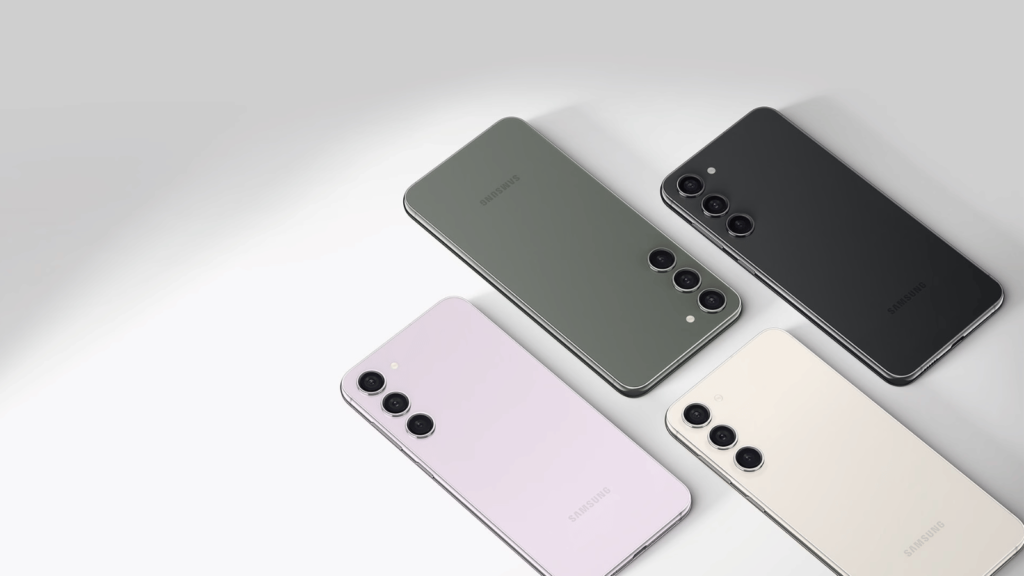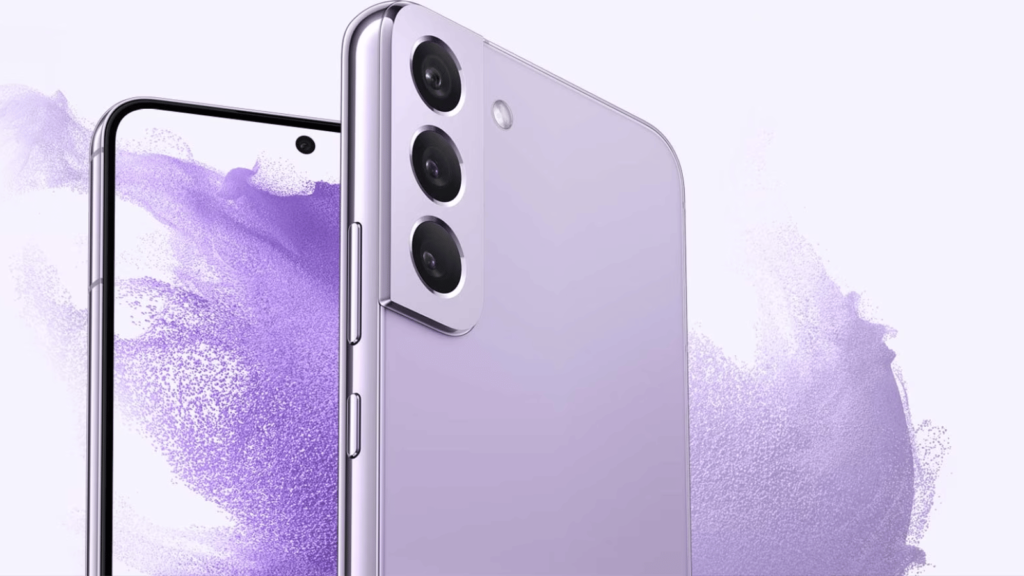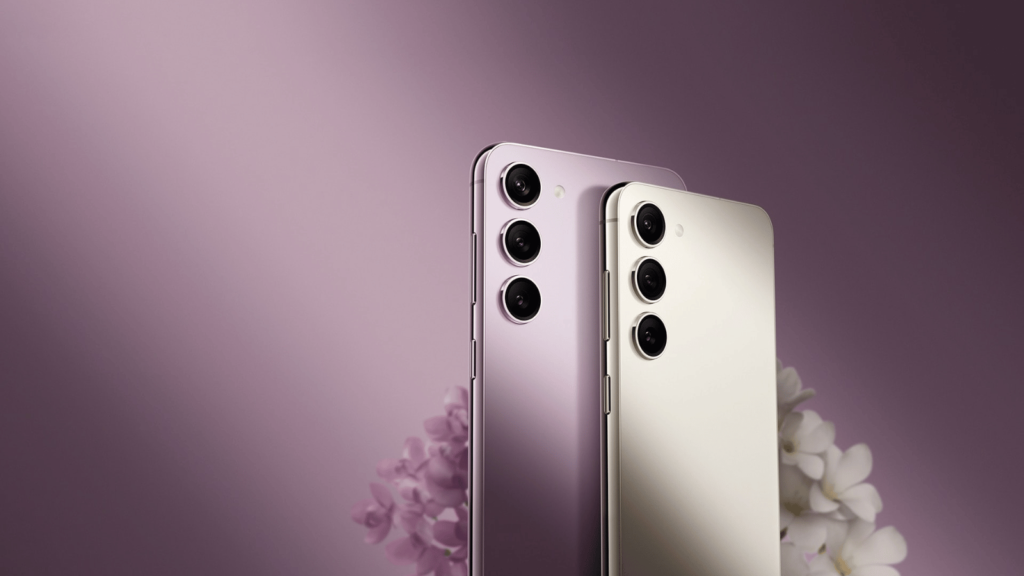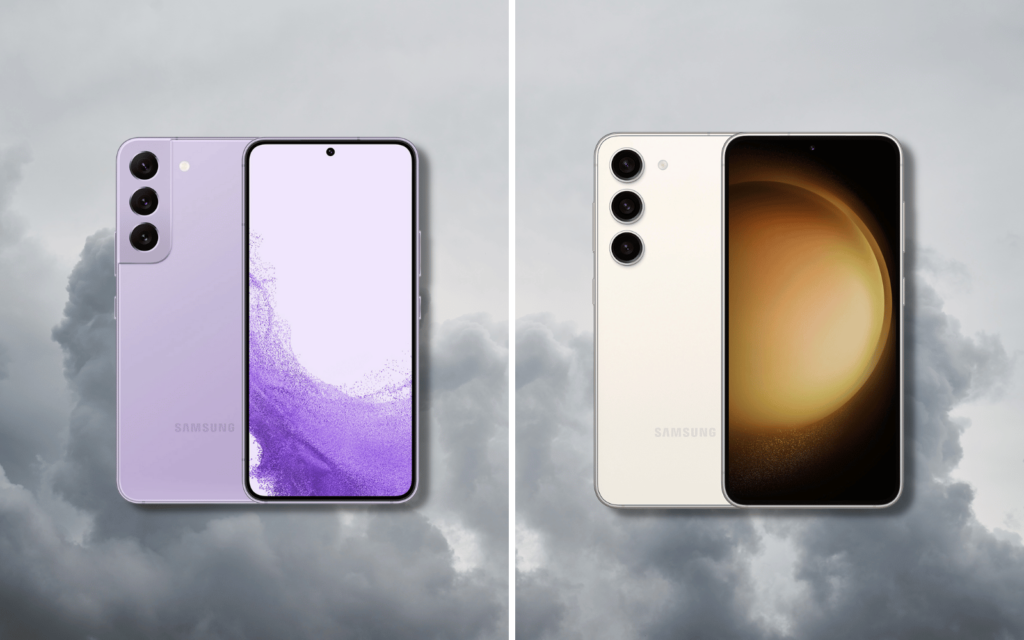Samsung’s latest Galaxy devices, announced at its Unpacked event on 1 February, have been available for pre-order since 17 February and will start shipping out today, 24 February. We’ve already spent some time with the flagship Galaxy S23 Ultra and compared it to last year’s Galaxy S22 Ultra. But its starting price of R31,000 is probably too steep for most folks.
If that’s you, maybe the Galaxy S23+ or base S23 models are more your speed. We’ve compared the spec sheets of the Galaxy S23+ and S22+ while we wait for our review unit and now we turn to the runt of the litter, the base Galaxy S23. If you’re reading this from your Galaxy S22, are the improvements worth the upgrade? Well, that depends.
Superficial siblings

You’d be forgiven for struggling to tell the difference between Samsung’s new crop of devices and its next of kin just by looking at them. The physical differences are tiny – as little as 0.3 millimetres in width – and the range’s overall design is largely the same as last year’s. If you’re nitpicking, the only notable difference between the two is the camera module design.
Both devices feature the same glass-and-aluminium sandwich design, although the S23 uses Corning’s latest Gorilla Glass Victus 2. The display panels are functionally the same as well. Both use the same fantastic 6.1in 120Hz Super AMOLED 2X display with a 1,080 x 2,340 resolution. The S23 sneaks ahead thanks to the bump in peak brightness, 1,750 nits up from 1,300.
If you’re prone to dropping your phone or are constantly using it outside in the glaring sun, then maybe the tougher glass and brightness boost is enough to warrant an upgrade. We’re not convinced.
Winner: Galaxy S22
Contains Qualcomm’s special sauce

If the only thing you need or care about from your smartphone is performance, an upgrade could be worth it here. The Galaxy S23 ships with Qualcomm’s latest Snapdragon 8 Gen 2 System-on-a-chip, garnished with a Samsung-exclusive performance boost. The ‘custom’ chipset is better than last year’s 8 Gen 1 in almost every way. The difference is even more noticeable if you had the misfortune of receiving the Exynos S22 variant. Although those were mostly sold in Europe.
The performance increase, while notable, will only really make a difference to power users, gamers in particular. The SoC in the S22 is still a fairly capable chip but the new Snapdragon results in a smoother gaming experience across the board and offers ray tracing in supported games. It also comes with power efficiency improvements, but we’ll get to that.
On the memory and storage front, the Galaxy S23 is only available with 8GB of RAM, the same as the S22, but comes with 128GB, 256GB, and 512GB storage options. While these are also the same as the S22’s options, the 512GB option is a first for the base model.
Regardless of capacity, the Galaxy S23 uses UFS 4.0 storage offering double the speed and better power consumption. Only you can decide if the improvements are worth spending the extra cash, but for us, they’re different and better enough to give this one to the newcomer.
Winner: Galaxy S23
Powering your day
It doesn’t matter how well a smartphone performs if it spends most of its life charging. You might as well have a landline. Although Samsung (and most other companies) reserve their biggest batteries for their best devices, the base model in the Galaxy S family is generally capable of getting you through a day. That will obviously depend on what you’re doing during your day, but for the average user, roughly 12 hours of screen-on-time is usually enough.
While the 3,900mAh battery in this year’s base S23 falls short of 2021’s 4,000mAh capacity, the extra 200mAh on the S22’s 3,700mAh is a step in the right direction. The bigger capacity and the improvements in power efficiency from the new Snapdragon chip and storage mean the S23 will likely provide a few extra hours of screen-on-time. Although the increased screen brightness might have something to say about that.
When you do need to fill it up, the S23 offers the same 25W wired and 15W wireless charging as the S22 did. Reverse wireless charging is no different either, offering the same 4.5W capability. Tell us, does anyone actually use that?
If your S22 isn’t lasting as long as you’d like then you might find solace with the slightly bigger, more efficient battery in the S23. But are a few more hours enough to justify paying more? We don’t think so.
Winner: Galaxy S22
Instead of saying 1,000 words

Samsung has made a big deal about the new camera chops in the S23 Ultra and that new 200MP sensor. And for good reason. But the base S23 was unfortunately overlooked when it came to camera upgrades.
The 50MP main, 10MP telephoto and 12MP ultrawide sensors in the S23 are the same sensors from last year’s model. Sure, the front selfie camera gained a whopping two extra megapixels, bringing it to 12MP and now supports HDR10+ video recording. But if you’re a budding photographer with an S22, the S23 isn’t going to provide a substantial improvement. It seems Samsung saved all the good camera upgrades for its darling Ultra.
Winner: Galaxy S22
Galaxy S23 vs. S22 – initial verdict
There aren’t that many differences between this year’s base Galaxy S device and last year’s. Those that do exist aren’t convincing enough to sway someone from parting with R21,000 if they’re already happy with their S22. At least, not in our books.
It’s a different story if you a) fall into one of the niche areas where the S23 can offer slightly more, b) are coming from the S21 or S20, or c) are looking to make the jump from the Galaxy A series.
Still, this is only our initial verdict based on a spec sheet comparison. Who’s to say the S23 won’t blow the S22 out of the water when it comes to real-life tests? That’s not likely, but it’s also not impossible.




